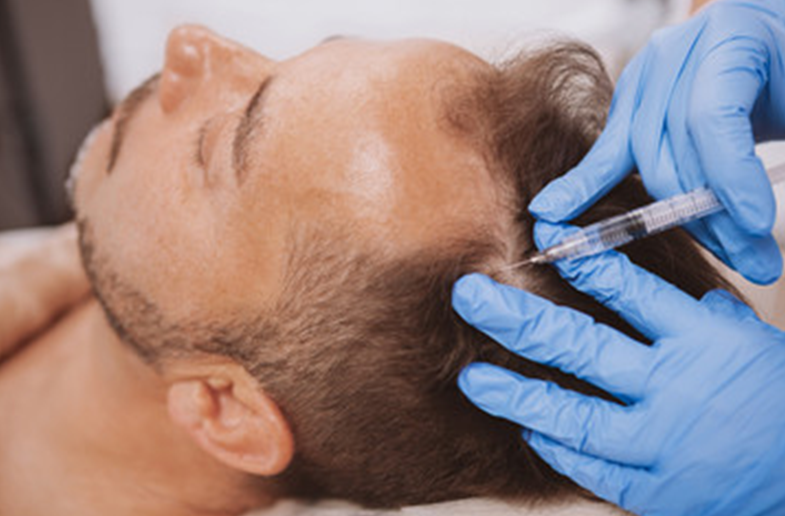Introduction
The potential of the human body to heal itself is awe-inspiring, and advancements in medical science have harnessed this power through platelet-rich plasma or PRP treatment. By increasing the concentration of natural growth factors found in blood platelets, PRP therapy promotes tissue regeneration and accelerates the healing process. This innovative treatment utilizes the patient’s own blood components, combining plasma and platelets to create powerful injections that have shown promising results in sports injuries, post-operative recovery, hair loss prevention, and more. In this comprehensive guide, we delve into the intricacies of PRP treatment, exploring its purpose, benefits, risks, and recovery process.
The ability of the human body to heal itself is amazing. In recent years, scientists have developed platelet-rich plasma (PRP), which allows them to increase the natural growth factors the body utilizes to mend tissues all over the body.
PRP consists of plasma, the liquid component of blood, and platelets, the tiny blood cells responsible for clotting and facilitating healing. Growth factors are molecules found in blood platelets that drive tissue regeneration and cell division. Plasma acts as the growth factor’s delivery medium.
Both components are combined to make blood plasma injections, which are increasingly used to heal sports injuries, speed up the recuperation process after surgery, and prevent hair loss, among other things.
What exactly is this PRP Injection Therapy?
PRP injection therapy employs the patient’s own blood components to hasten the repair of injured tendons, ligaments, joints, and muscles. After collecting blood samples from the patient, they undergo centrifugation to separate the red blood cells from the platelets and plasma, which are then used for the injections.
To utilize growth factors and encourage regeneration, the plasma is now condensed and injected directly into the wounded tissue. Studies have revealed that the faster healing time is caused by an increased concentration of growth factors in the injected area, even though the mechanism behind PRP injections is still not fully understood.
Injecting plasma rich in platelets has been shown to be a very effective technique to use the body’s own healing properties to heal itself because the patient’s own blood samples are used in the treatment.
What is the purpose of PRP injection therapy?
PRP injection therapy’s full potential is currently being investigated. However, it has currently found a variety of applications, such as:
- Treatment for tendon injuries, such as patellar tendinopathy (jumper’s knee), tennis elbow, and Achilles tendonitis.
- Acute wounds like sprained knees and torn hamstrings.
- Accelerated post-operative recovery by encouraging wound healing.
- Treatments for anti-aging and skin renewal
- Encouraging the growth of new hair and avoiding hair loss.
What Benefits Do PRP Injections Offer?
Clinical studies have so far demonstrated the great advantages of PRP injection therapy, but additional research is needed to fully understand these advantages. These consist of:
Injury-Related Sports Injuries Recover More Rapidly
For athletes who have sustained tendon, joint, ligament, muscle, and other soft-tissue-related injuries, PRP therapy is a desirable course of treatment. Plasma injections expedite the recovery process and facilitate faster healing in the injured areas, allowing athletes to return to their sport more quickly.
Relief From Osteoarthritis Symptoms
Osteoarthritis patients typically experience excruciating knee pain as a result of the afflicted knee joint’s lack of lubrication and cushioning. However, PRP therapy can replenish hyaluronic acid, the main lubricant in the knee, ease osteoarthritis symptoms, and stop the condition from getting worse.
Reduced Inflammation and Healing
Additionally, PRP therapy has pain-relieving qualities that successfully reduce edema and inflammation in wounded body areas.
Long-lasting Lower Back Pain Relief
Chronic back pain, which is notoriously difficult to treat, has been proven to benefit from PRP therapy. This therapy has been successful in relieving patients with persistent back pain because it encourages the healing of structural components including discs, ligaments, and joints that are responsible for lower back discomfort.
Risks Associated with Blood Plasma Injections
As a minimally intrusive therapy procedure employing the patient’s own plasma, the potential for allergic reactions and other side effects is considerably reduced. But be careful to drink plenty of water because some individuals feel dizzy following a blood draw. Others have described bruising and pain at the injection site.
- Bleeding is one of the less frequent negative effects.
- Tissue injury.
- Neurological harm.
Treatment and Recovery Period Length
The average PRP injection treatment session lasts no longer than an hour. After the therapy session, your healthcare provider will recommend resting the injured area to facilitate the healing process. This is since healing still requires time, even though PRP treatment greatly shortens your recovery period.
Plasma injections aren’t designed for rapid recuperation. It will take some time before you see their effects, even though they are meant to encourage development or healing. After receiving an injection in the afflicted location, patients typically start healing a few weeks or months later. The body will now repair more quickly than before, hastening your recuperation.
Getting Ready for Plasma Platelet Injection Therapy
Therapy using plasma platelet injections is a risk-free, safe method with several advantages. For the best outcomes, it is nevertheless advised that you exercise caution before receiving therapy. The suggestions listed below can help you get ready for injectable therapy:
Stop using blood-thinning drugs like aspirin and ibuprofen.
Do not consume vitamins and supplements that alter the consistency of your blood, such as omega-3 fatty acids and vitamin E.
To prevent feeling dizzy during the surgery, eat a substantial meal beforehand.
For around 48 hours, refrain from washing the treated area.
Additionally, PRP injections are not permitted for those with anemia, cancer, low or irregular platelet counts, or infections. Therefore, before receiving therapy, be sure to speak with your doctor.
Conclusion
PRP injection therapy has emerged as a remarkable approach to tap into the body’s innate healing abilities. From sports injuries to osteoarthritis and chronic pain management, PRP treatments offer accelerated recovery, pain relief, and improved tissue regeneration. While further research is still needed to fully understand the scope of its benefits, PRP therapy has already demonstrated its potential in revolutionizing various fields of medicine. As a minimally invasive procedure utilizing the patient’s own plasma, PRP injections are generally safe and well-tolerated. By following pre-treatment guidelines and allowing time for the healing process, patients can experience the transformative effects of PRP treatment, enhancing their well-being and quality of life.




